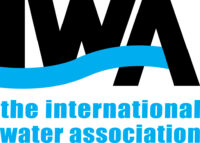A major challenge facing many municipalities is how to deal with high levels of water loss, or Non Revenue Water (NRW). Although not all NRW is leakage, inefficient management of distribution system pressures is known to cause substantial avoidable leakage and burst pipes; it also brings with it other adverse consequences such as reduced infrastructure life.
Many utilities continue to struggle with forming a convincing business case to replace and upgrade aging and inefficient distribution networks, while many regulatory policies still fail to reward cost-conscious efforts to upgrade or better manage networks. Pressure management has a great potential to help improve efficiency, reduce costs and alleviate impending water scarcity; in fact pressure management is now recognized as the foundation for optimal management of water supply and distribution systems.
Thanks to the work of the Water Loss Specialist Group of IWA, the proven benefits of pressure management in distribution systems have now moved beyond basic control of leak flow rates, as initially researched in the UK and Japan thirty years ago. Pressure management is now seen as having an increasingly wide range of benefits not only including environmental and water conservation benefits of reducing leak flow rates and some components of consumption, but also benefits for water utilities and customers from energy savings and reducing the number of bursts and leaks.
These benefits also include reduced repair and reinstatement costs, reduced public liability and adverse publicity; reduced costs of active leakage control, deferred infrastructure renewals and extended asset life of mains and service connections; and fewer problems on customer service connections and plumbing systems, all leading to fewer customer complaints.
Pressure Management is considered of paramount importance by the European Commission, highlighted in the European Union reference document “Good Practices on Leakage Management”[1], adopted by EU Water Directors in their final meeting of 2014[2].
The application of the latest methodologies and technologies in pressure management will allow European water utilities to improve their efficiency by improving their performance in water loss management. This can be of even greater benefit in water systems characterised by old infrastructure with reduced residual life, as is the case for most South East European cities. Here pressure management can reduce the stress on infrastructure, extending its life, while reducing and readdressing the need for capital investments.
It is to address the pressing need for improved water utility efficiency in this part of Europe that the IWA Water Loss Management 2015 Conference (http://waterloss2015.araexpoapa.ro/ro/) is being organised Bucharest, Romania, 14 – 17 June. The conference aims to have a catalytic effect on transforming Water Loss management in Eastern Europe. It will be part of a series of events organised by Romanian Water Association within Regional Water Forum Danube-Eastern Europe.
Many members of the IWA Water Loss Specialist Group, and of the drafting group of the European Union reference document, will present at the conference. It is an opportunity to network with leading specialists, discover new science, practices and technologies, and to gain new perspectives on finding solutions to Water Loss. Don’t miss your opportunity to join the experts, learn from their experience and present your own work.
As an added incentive, there will be a full session on the EU’s “Good Practices on Leakage Management” reference document.
I look forward to meeting you in Bucharest.
[1] These documents are now publicly available following an initiative sponsored by the European Commission – DG Environment as part of the Work Programme of the Common Implementation Strategy for the Water Framework Directive and Floods Directive (https://circabc.europa.eu).
Direct web links:
- Main Report: http://bit.ly/16dzx9f
- Case Study document: http://bit.ly/1K6K8BK
- Dissemination Plan: http://bit.ly/1x4nO2P
[2] An ‘At a glance’ summary is also available at http://www.leakssuite.com/wp-content/uploads/2015/02/AtaGlance-Leaflet-EU-Ref-Doc-Leakage-20150210.pdf
Further supplementary presentations as part of the Dissemination Plan are being collated for free downloading athttp://www.leakssuite.com/eu-good-practice-on-leakage-management/




